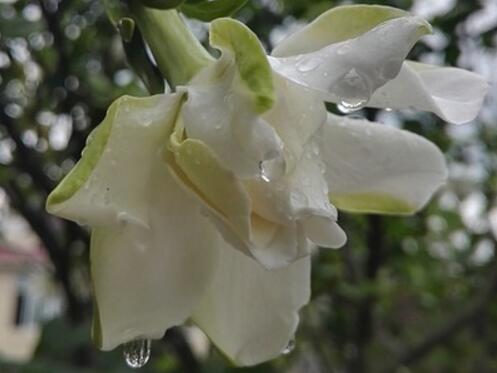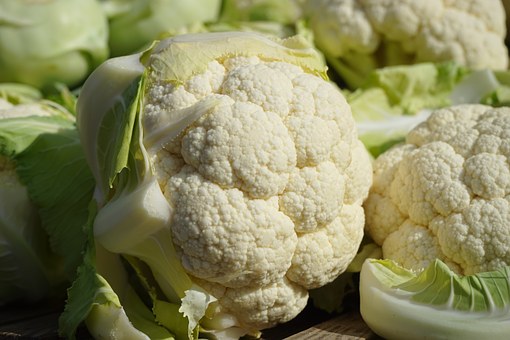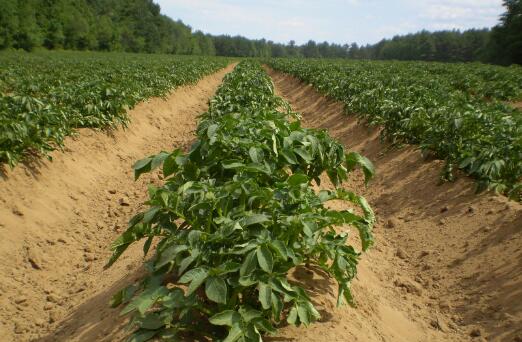How long do gardenia seeds germinate? How to grow? What are the effects and functions?
Gardenia, also known as gardenia, yellow gardenia, gentian Rubiaceae. Belonging to Rubiaceae, it is an evergreen shrub with luxuriant branches and leaves, evergreen leaves and fragrant flowers. It is an important garden ornamental plant. So, how long does it take for gardenia seeds to sprout? How do you plant it? What is the effect and effect?

How long does Gardenia seed sprout?
Gardenia jasminoides can emerge about 20 days after sowing. Gardenia can be sowed in spring or autumn, generally in spring, spring sowing before and after Rain Water, autumn sowing before and after the Autumn Equinox, about 20 days after sowing can emerge. After emergence, we should pay attention to remove the cover grass in time, weed frequently in the seedling stage, be careful not to hurt the roots of the seedlings, need to dilute human feces and urine after weeding, and can be transplanted after raising seedlings for one year.
How to plant gardenia seeds?
1. Seed selection:
Choose full, dark red ripe fruits to be dried or dried, dig out the seeds and rub them in hot water to remove floating seeds or impurities, then remove the sunken full seeds on the bamboo mat and dry the excess moisture in a ventilated place.
2. Land preparation:
Select the sandy loam with deep, loose and fertile soil layer, ploughing for 1-1.5 feet, apply 20-30 piculs of human feces per mu, flatten the border surface after the soil is dry, and sow the ditch according to 6-7 inch row spacing on the border surface, the ditch depth is about 1 inch.
3. Sowing:
Gardenia can be sowed in spring or autumn, sowed in spring before and after Rain Water, sown in autumn before and after the Autumn Equinox, sow seeds mixed with fire ash evenly in the sowing ditch, and then cover the sowing ditch with fine soil or fire soil, often keep the soil moist to facilitate seedling emergence.
4. Raising seedlings:
After sowing, gardenia is often watered to keep the border moist, and the seedlings can emerge in about 20 days. after emergence, the cover grass on the border can be removed, when the seedlings grow out of 2 or 3 true leaves, the seedlings should be thinned, the overdense seedlings and weak seedlings should be removed, and the seedlings should be fertilized properly.
5. Planting:
Gardenia is sown in autumn and cultivated to the end of autumn and the beginning of winter in the second year. The seedling height of more than 30 cm can be planted in spring, and if it does not reach the height of 30 cm in spring, it can be planted in late autumn and early winter.
What is the effect and effect of gardenia?
1. Gardenia is bitter, cold and non-toxic; it is slightly sour and bitter; it enters the heart, liver, lung and stomach meridians. Gardenia flower contains flavonoid geniposide, pectin, tannin, saffron, etc., roots, leaves, flowers can be used as medicine, with sedation, blood pressure, bacteriostasis, diarrhea, analgesia, anti-inflammation, regulation of smooth muscle, accelerate the healing of soft tissue, and has the effect of purging fire, eliminating inflammation and heat, clearing heat and diuresis, cooling blood and detoxification.
2, gardenia bitter cold, can blood and clear evil heat, wide bowel laxation, anti-cancer, gardenia contains cellulose, can prevent the attack of hemorrhoids and the occurrence of rectal cancer.
3. The root, leaf and fruit of Gardenia jasminoides can be used as medicine, which has the effect of purging fire and removing annoyance, eliminating inflammation and heat, clearing heat and diuresis, cooling blood and detoxification.
Time: 2019-03-20 Click:
- Prev

When will the "poor doctor" cauliflower be planted? How to grow high yield? How much do you earn from planting an acre?
Cauliflower, also known as kale, cauliflower and cauliflower, is a common vegetable in China. It is very popular because of its high vitamins and mineral elements. At present, it is grown in many areas of our country.
- Next

"Solanaceae plant" which variety of potato (potato) is good? How to plant in order to produce high yield? (with variety introduction)
Potato is a perennial herb of Solanaceae, also known as ground egg, potato, potato, etc., the fourth most important food crop in the world, second only to wheat, rice and corn, and has become the world's five largest crops with wheat, rice, corn and sorghum. Native to the Andes of South America
Related
- Fuxing push coffee new agricultural production and marketing class: lack of small-scale processing plants
- Jujube rice field leisure farm deep ploughing Yilan for five years to create a space for organic food and play
- Nongyu Farm-A trial of organic papaya for brave women with advanced technology
- Four points for attention in the prevention and control of diseases and insect pests of edible fungi
- How to add nutrient solution to Edible Fungi
- Is there any good way to control edible fungus mites?
- Open Inoculation Technology of Edible Fungi
- Is there any clever way to use fertilizer for edible fungus in winter?
- What agents are used to kill the pathogens of edible fungi in the mushroom shed?
- Rapid drying of Edible Fungi

